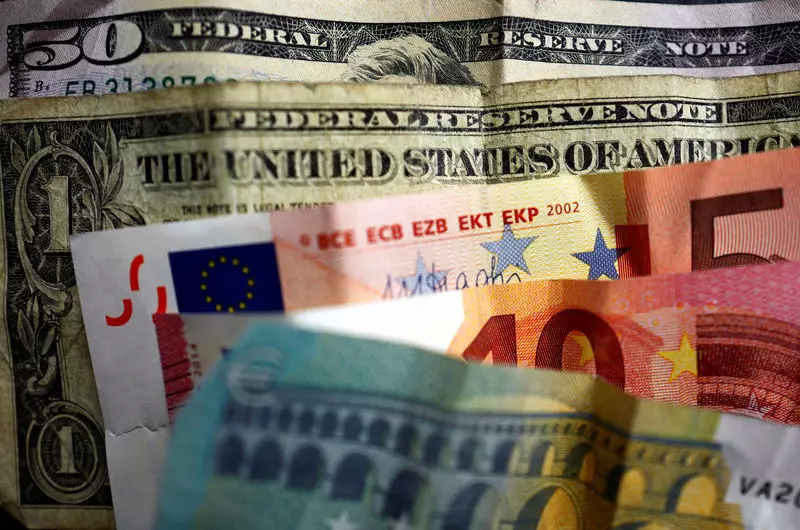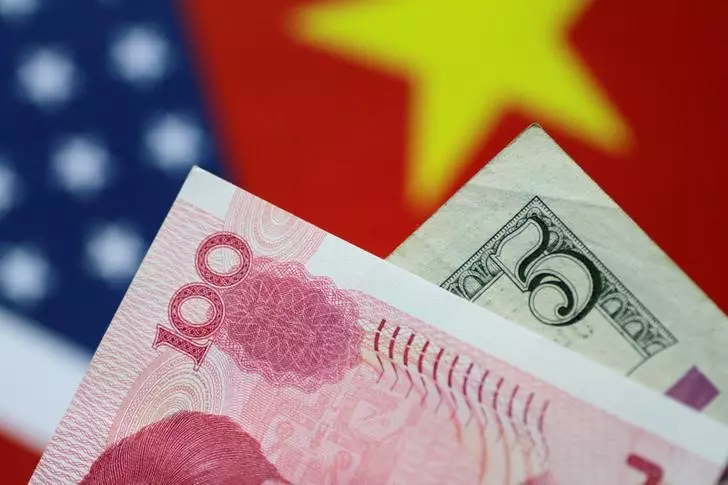The Shifting Dynamics of Currency Markets: A Closer Look at Recent Movements

The currency markets witnessed a notable shift as the U.S. dollar experienced a decline while other major currencies such as the euro and sterling gained traction. This movement aligns with anticipations concerning the Federal Reserve’s impending rate-cutting cycle, set to commence later this week. As investors grapple with potential policy adjustments, the implications for both domestic and international economic landscapes become increasingly significant.
As of Monday morning, the Dollar Index, which measures the greenback against a collection of six other currencies, recorded a decrease of 0.4%, settling at 100.357. The Federal Reserve’s policy-setting meeting, scheduled for Wednesday, has investors on high alert, given the widespread expectation that interest rates will drop from their current range of 5.25%-5.5%. This range has remained unchanged for the past 14 months, and with the recent evidence of declining inflation—reflected in last month’s consumer price index dropping to its lowest since February 2021—the stage is set for a significant policy pivot.
However, uncertainty looms regarding the magnitude of this decrease. The dollar experienced a pronounced decline following speculation fueled by media reports that suggested a potential 50-basis-point cut. Market consensus, as indicated by Fed fund futures, suggests a 59% likelihood for this more substantial cut at the upcoming meeting. This level of uncertainty presents a complex landscape for traders and investors who must navigate competing narratives about Federal Reserve policy actions.
In conjunction with the dollar’s decline, U.S. Treasury yields have responded accordingly, reinforcing the likelihood of impending rate cuts. The benchmark 10-year Treasury yield recently slipped by 30 basis points within just two weeks, a trend that traders are closely monitoring. Following the Fed’s announcement, Chairman Jerome Powell will likely provide insights into not only the immediate interest rate outlook but also broader economic forecasts, which could further influence market sentiment.
Across the Atlantic, the euro gained momentum, trading 0.4% higher against the dollar at 1.1115. This ascent occurs even as the European Central Bank (ECB) enacted a 25-basis-point cut last week. Despite the rate reduction, ECB President Christine Lagarde’s comments about avoiding pre-committed decisions for future meetings tempered expectations of further cuts in the near term. As Eurozone policymakers adopt a wait-and-see approach, the euro has capitalized on dollar weakness, enhancing its attractiveness to investors.
Moreover, significant voices within the ECB, including Chief Economist Philip Lane and Vice President Luis de Guindos, have engagements scheduled for Monday. Their insights may further shape market perspectives surrounding euro dynamics as trading unfolds.
Meanwhile, the British pound also experienced a 0.4% rise against the dollar, trading at 1.3173. As the Bank of England approaches its policy-setting meeting this Thursday, analysts anticipate that it will maintain the key interest rate at 5%. Following a recent 25-basis-point reduction, the pound’s performance reflects a nuanced response to broader currency trends. Analysts from ING have highlighted that the strength of the pound amidst ongoing dollar softness suggests that there has yet to be any significant negative news affecting sterling, indicating robust market sentiment.
The Japanese yen, conversely, saw a notable increase of 0.8% against the dollar, reaching levels not seen in over eight months. With a Bank of Japan meeting on the horizon, investors are poised for insights that may influence currency dynamics further. Despite expectations for the BOJ to retain its policy rate at 0.25%, indications from board members hint at a willingness to consider higher rates, potentially setting the stage for a substantial shift in yen-funded carry trades.
The recent fluctuations in the U.S. dollar, euro, sterling, and yen are indicative of broader economic forces and monetary policy uncertainties that shape currency markets. As central banks recalibrate their approaches amid evolving economic conditions, traders and investors must remain vigilant, recognizing that each policy decision carries ripple effects across global markets. The upcoming Federal Reserve meeting, combined with ongoing developments in Europe and Asia, underscores the ever-changing landscape of currency trading and its profound implications for international finance.





